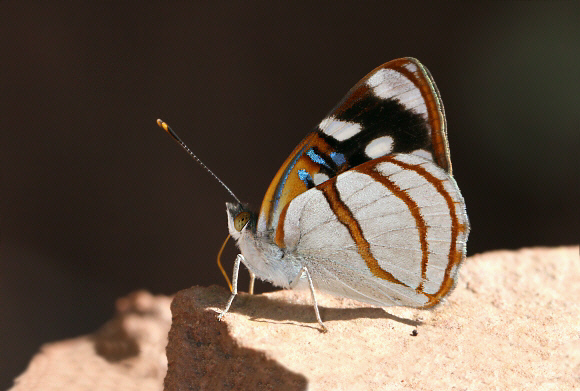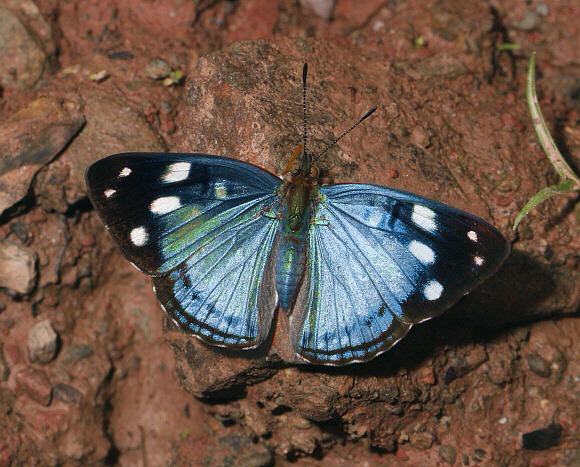 Dynamine tithia salpensa, Catarata Bayoz, Le Merced, Peru – Adrian Hoskins
Dynamine tithia salpensa, Catarata Bayoz, Le Merced, Peru – Adrian Hoskins
Introduction
The Biblidinae are known for their diverse but simple and colourful patterns. In the neotropics their representatives include the subtribe Eubagina, within which are placed the 40 Dynamine species.
Most Dynamine species have metallic bluish or greenish uppersides with a dark apex, and a series of white spots. The undersides of most species are white, marked with narrow bands of orange – and in some species also with conspicuous ocelli and small patches of metallic blue scales.
The greatest diversity of species is found in the Amazon basin, but the distribution of the genus ranges from Mexico to Bolivia.
Dynamine tithia occurs in Colombia, Ecuador, Peru and Brazil. The illustrated subspecies salpensa is found in the upper Amazonian regions of Peru, Ecuador and Brazil.
Habitats
This species is found in primary and disturbed rainforest at altitudes between about 200-1000 m.
Lifecycle
The eggs of most Dynamine species are white. They are laid singly on the leaf axils or flower buds of Euphorbiaceae genera such as Tragia and Dalechampia. The larvae are described by DeVries as being slug-like, with tiny rosettes of spines on the back. The pupae are greenish, elongate, with a slightly bifid head and a pronounced dorsal keel, and suspended by the cremaster from stems or leaves stems or leaves.
 Dynamine tithia salpensa, Catarata Bayoz, Le Merced, Peru – Adrian Hoskins
Dynamine tithia salpensa, Catarata Bayoz, Le Merced, Peru – Adrian Hoskins
Adult behaviour
The butterflies are only active in hot sunny conditions, when they can be seen flying rapidly in zig-zag fashion along sunny tracks in the mornings. During the afternoon males visit dry river beds, and damp ground along sunlit forest tracks and roads. The wings are normally kept closed, but they periodically fan their wings as they flit about from spot to spot on the ground.
